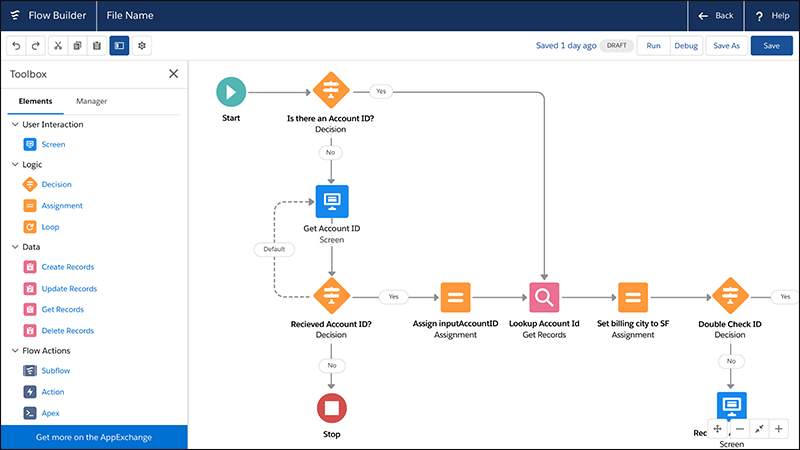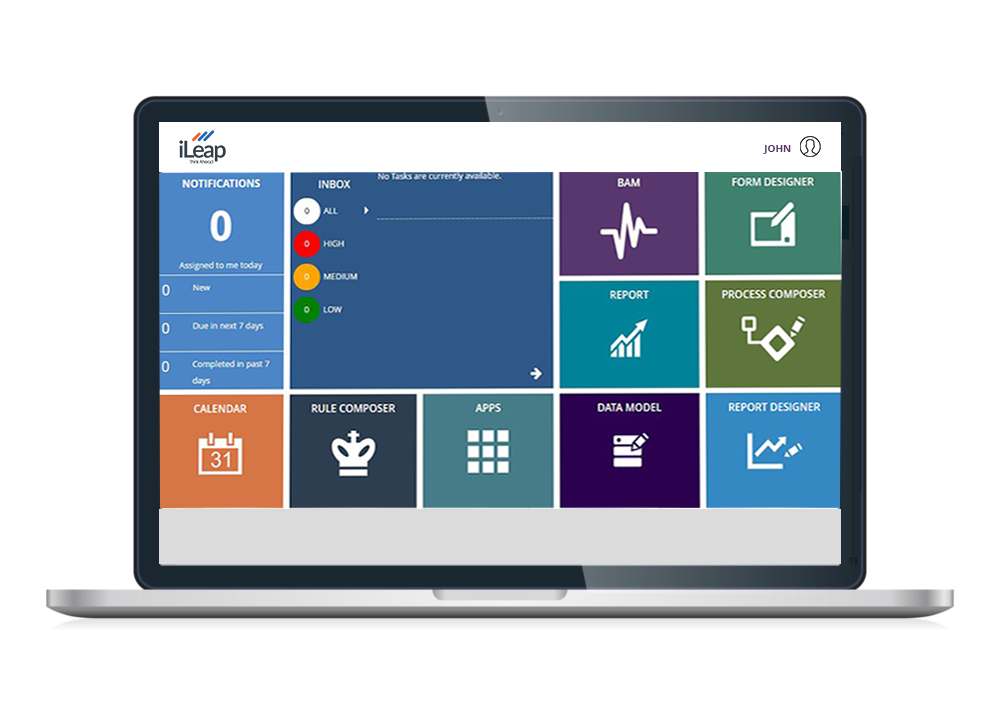Recommended Ideas On Deciding On Legacy application modernization with Low-code
Wiki Article
The Accessibility Of Low-Code Applications Is One Of The Biggest Benefits.
Due to several factors due to a variety of factors, low-code development is easier to non-developers. They are commonly referred to as "citizens developers."
Drag-and-Drop Builders: Low-code platforms come with drag-and-drop interfaces that allow non-developers to create apps without having to write any code. This makes it easier for those with less technical backgrounds to get involved in the development process.
WYSIWYG: WYSIWYG editors are "What you see is what you get" editors that allow users to create workflows and interfaces in a similar manner to the final product. It makes it much simpler to use and understand.
Simplified Logic Design and Workflow Design
Visual Workflow Design: Users can easily design business process and application logic by using diagrams, models, and flowcharts. They are easier to use than traditional programming.
Pre-built Components for Logic: Low-code platforms typically include already-built logic (e.g. loops or conditional statements) which can be easily adjusted, thus reducing the need for complex programming.
Reusable Components & Templates
Libraries of pre-built templates: Many low code platforms provide a library for the most common types of applications, allowing those who are not developers a base to build on and later alter.
Reusable Widgets and Modules Users can use reusable widgets and modules to streamline the process of creating them and reducing the requirement for technical expertise.
Guided Development and Tutorials
Step-by-step guide: Platforms offer tutorials, tips and tricks on the screen and a set of development steps to help non-developers build applications.
Interactive Tutorials Interactive tutorials are hands-on and interactive, which help users to learn through doing. This boosts their confidence in the platform.
Integration with Tools Already in Use
Integration seamless Low-code platforms are developed to integrate seamlessly with existing business systems and tools (e.g. ERP, CRM) allowing non-developers create applications in their existing workflows.
APIs and Connectors APIs built-in and connectors simplify the integration process, enabling developers to connect their applications with external services, without requiring complicated coding.
Collaboration Features:
Team Collaboration: Features such as real-time collaboration, as well as shared workspaces let non-developers to work alongside business analysts, professional developers, and other stakeholders effectively.
Role-Based Access Control: Those who are not developers are assigned roles, with the appropriate access levels, which ensures they can contribute to the process of development without having to compromise security and functionality.
Automated Testing & Debugging
Low-code platforms come with tools for testing and debugging that are built in. They automatize the procedure, making it much easy for non-developers to ensure their apps run.
Error Highlighting When errors occur, the platform highlights these and suggests possible fixes. It assists non-developers with troubleshooting.
The capability of low-code apps to make development accessible for those who are not developers is its main benefit. Low-code platforms enable business users to participate actively in the creation and development of applications through the use of intuitive visual tools and guided experience. This helps bridge the gap between business and technical requirements. Have a look at the top Low-code Platform for application development hints for blog recommendations including push notifications android, jdbc server, app modernisation, paas service, app development platform, mobile development platforms, develop cross platform mobile app, rapid applications, application modernization software, software for app development and more.

The Benefits Of Low-Code Development For Governance And Security
Low-code applications provide a number of advantages for governance and cybersecurity that are essential to ensure that all apps are well-managed, managed, and compliant throughout their lifespan. These are the benefits of developing applications using low-code:
Unified Management Console: Low-code platforms typically provide a centralized management console that allows administrators to supervise and manage all applications, ensuring consistent governance across the entire organization.
Role-Based Access Control: These platforms include robust role-based control which allows administrators to set guidelines and then enforce these policies. This guarantees that only users who are authorized can access or modify certain areas of the application.
Compliance and Regulatory Adherence
Built-in Compliance Features: A lot of low-code platforms are designed to conform to industry norms as well as regulations (e.g. GDPR, HIPAA). They offer templates and tools to ensure that the applications are compliant with these regulations.
Audit Trails and Logging Complete logging, audit trails, and logs are often integrated into businesses, allowing them to track changes and monitor access. They also help to ensure compliance of internal and outside rules and regulations.
Increase Security Measures
Data Encryption: Low-code systems typically provide built-in encryption for data at rest and while in transit, making sure that data sensitive information is secured.
Security Certifications A lot of low-code vendors have security certifications (e.g. ISO 27001, SOC 2 ) that demonstrate compliance with high security standards. This gives additional security for the customers.
Automated Security Updates
Regular Updates and Patches Low code platforms typically are capable of handling security patches and updates regularly. This means that apps remain safe from the latest threats, without developers having to manually intervene.
Security Monitoring Tools: Tools for constant security monitoring are available. They offer real-time alerts, as well as insights into possible security issues.
Data Governance
Data Access policies: These platforms help organizations define and apply their policies on data access and ensure only authorized users are able to access data and that it is being used appropriately.
Data Masking & Anonymization: Built in tools to mask and anonymize data safeguard sensitive data, particularly in development environments and testing environments.
Consistent application lifecycle management:
Pipelines for development and deployment Lowcode platforms usually provide integrated development-and-deployment pipelines with security tests. They guarantee protection throughout the lifecycle of the application.
Version Control. Integrated version management helps track and reverse any changes that are made to the program, while ensuring that its integrity is protected.
User Authentication & Authorization
Single Sign-On: The support for SSO and other advanced authentication methods simplifies the management of users as well as improves security.
Multi-Factor Authentication Numerous platforms have integrated functionality to verify multi-factor identities and provide an additional layer for security.
Policy Enforcement and Compliance:
Policy Templates: Platforms that are low-code typically have pre-defined templates for policies which allow organizations to quickly implement governance and security policies.
Compliance Monitoring Tools - These instruments permit continuous monitoring of compliance status and provide reporting, making it easy to identify and resolve any issues that might arise.
Integration with Existing Security Infrastructure
Integration seamless: Low-code platforms can easily be integrated into the existing security tools and devices like firewalls, SIEM solutions (Security Information and Event Management), and identity management systems.
API Security: API security features that protect data and maintain the integrity of the application are integrated into the API.
Training and best practices
Guided Best Practices: A number of platforms offer guidelines and best methods for secure application development and help non-developers comply with security standards.
Security Training Some low-code service providers provide security tools and training for users to teach them how to build and maintain secure applications.
Overall, governance and application security benefits assure that applications are developed and maintained in a secure manner and in accordance with regulations and in control. These platforms have the tools and frameworks needed to secure sensitive data as well as enforce policies and ensure compliance with regulations while reducing management and oversight. Check out the best right here on Legacy application modernization with Low-code for site info including jdbc server, jdbc server, rapid applications, sso azure, stored sql procedures, push notifications, azure sql, develop mobile application, low code development platforms, cross platform mobile app development and more.

Benefits Of Low-Code App Development In Terms Limitations And Customization
Low-code design for applications is a balanced, flexible approach that addresses the limitations of the system and allows for modification. These are the main benefits: Handling the limitations
Resolving Complexity:
Simplified Development: Low-code platform reduces the complexity of development by providing components and templates that are pre-built, allowing rapid creation and deployment.
Guided Workflows - A lot of platforms provide guided workflows or wizards to assist developers with complex procedures. This decreases the possibility of errors and assures consistency.
Scalability Solutions
Scalability integrated into Low-Code platforms: Low-code platforms usually come with capabilities that permit an scalable architecture. This enables applications to handle greater loads without massive re-development.
Performance Monitoring Performance Monitoring Tools: Integrated performance monitoring tools and optimization make sure that applications are as efficient as they can be, no matter their scale.
Security and compliance
Low-code platforms have built-in security features such as security access control based on role as well as encryption and automated checks to ensure security compliance. These measures address the commonly-asked security issues.
Regular Updates: Platforms regularly upgrade their security protocols and conformity measures, making sure that applications are protected against the latest threats.
Features of Customization:
Extensibility:
Low-code Platforms Allow Custom Code Platforms that allow the integration and use of custom code.
Moduls and custom plugins: Developers may create custom plug-ins or modules that have specific features that are tailored to the specific requirements of a company.
APIs and integration:
API Support: Comprehensive APIs support is available to enable seamless integration and communication to external systems.
Third-Party Service: Low-code platforms offer pre-built connectors for popular third-party service providers, making it simple to integrate and customize apps.
Flexible Design for UI/UX:
Customizable Interfaces: Developers have the ability to design and modify user interfaces based on specific branding and usability criteria and create a personalized user experience.
Responsive design: The capability to tailor applications for various devices and screens is built-in.
Making Business Logic more flexible is simple:
Visual Workflow Builders: Visual tools for designing and customizing workflows and business logic allow developers to develop complex, customized processes without extensive programming.
Platforms provide conditional logic that can adapt to certain business requirements or scenarios.
Data Management
Custom Data Models Developers have the ability to develop customized data models that are tailored to specific business needs. This will ensure that the handling of data is customized for each application.
Advanced Data Processing: Integration with the latest tools and capabilities to process data allows flexibility in the way data is processed, analyzed and utilized in your application.
Balancing limitations with customisation:
Frameworks and Standards
Low-code Platforms Encourage Industry Best practices and standards: Low code platforms encourage adhering to the industry's best standards and practices. This allows for the maintenance of high-quality, secure and adaptable applications.
Governance Frameworks. The built-in governance frameworks ensure that customizations are not damaging to the security, integrity or the compliance of an application.
Feedback and Iterative Design
Rapid prototyping. Developers can develop and refine applications based upon feedback from users.
Low-code platforms enable continuous improvement, allowing for the continuous improvement of their design and enhancements the platform as requirements of business evolve.
Empowering Users:
The empowerment of citizens-developers through low-code platforms boost the number of developers who are capable of improving and customizing applications, by permitting them to create custom an intuitive user interface.
Training and Support: A lot of platforms provide extensive training and support resources to help users make successful modifications that do not compromise the stability of the application, or its performance.
Overall, the Low-code app creation offers a framework that is sturdy and flexible enough to accommodate restrictions while allowing plenty of customisation. This balance allows companies to build and maintain apps that are efficient, adapted to meet their needs, and adhere to high standards of security, quality and scalability.
